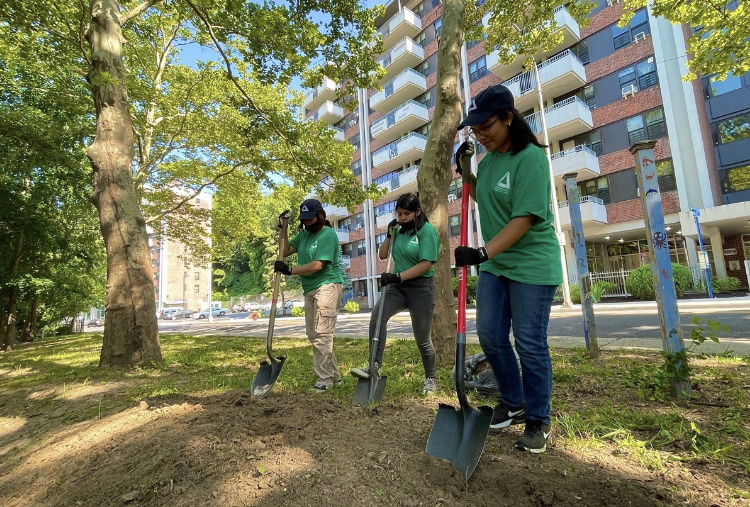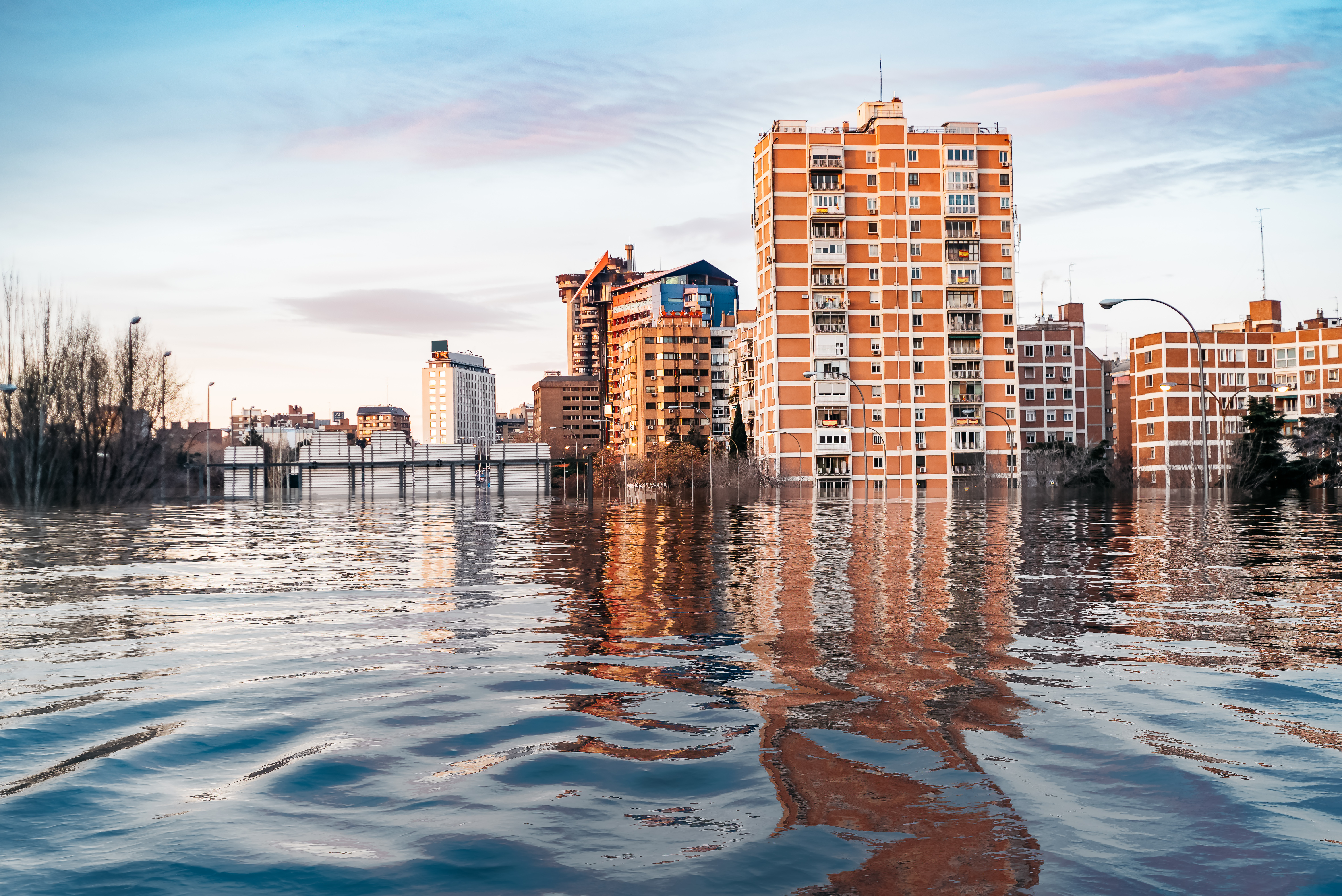 Like many cities across the U.S., the city of Yonkers has long been plagued by extreme heat and flooding brought about by climate change.
Like many cities across the U.S., the city of Yonkers has long been plagued by extreme heat and flooding brought about by climate change.
To tackle these critical issues, the Municipal Housing Authority for the City of Yonkers (MHACY) is partnering with Groundwork Hudson Valley, a local nonprofit, and putting the $2 million it received in grants toward the nonprofit’s Climate Safe Neighborhoods initiative. MHACY President and CEO Wilson Kimball, along with Groundwork Hudson Valley Executive Director Brigitte Griswold, spoke with HAI Group’s Staci Canny about their plans to spearhead climate resiliency efforts in the city, along with tips for other housing agencies facing similar challenges.
Staci Canny: Thank you both for speaking with me about your work in Yonkers. Receiving a $2 million grant is a huge accomplishment! Can you talk about some of the projects you plan to do with the money?
Wilson Kimball: Sure. We received the grant from several organizations, including New York State Environmental Facilities Corporation, Bezos Earth Fund, and Bank of America. We’re planning on using the grant to retrofit 10 MHACY properties with green infrastructure, which includes building community gardens, painting roofs white to reflect heat, creating flood mitigation structures, like holding tanks and bioswales, and planting trees, which will create a stronger canopy to cool neighborhoods, and help absorb excess water. Speaking of trees, New York State Energy Research and Development Authority partnered with us, too. For every tree we purchase through them, they will double our order, which is incredible. Groundwork Hudson Valley will run climate educational programs for residents, and local high school students hired through its Green Team program will be helping us with all of these projects. Additionally, we’re planning some large-scale projects, like designing external boiler systems for some of our most flood-prone buildings and constructing retention systems.
Watch this video to see Yonkers high school students, part of Groundwork Hudson Valley’s Green Team, build a rain garden to help combat flooding in their community.
SC: That sounds wonderful. So, how did this partnership between MHACY and Groundwork Hudson Valley come about?
Brigitte Griswold: Groundwork Hudson Valley is an environmental justice nonprofit working to improve the environmental conditions of our neighborhoods. Our research found a direct correlation between MHACY properties, redlining, extreme heat, and flooding. I reached out to Wilson in 2020 to see if she wanted to partner up to tackle these problems. Once we secured the $2 million grant, we worked with a landscape architecture firm to identify the most feasible green solutions we could implement.
SC: Can you explain why MHACY’s properties are affected by redlining?
BG: Redlining began in the 1930s as a way for the Home Owners’ Loan Corporation (HOLC) to determine perceived mortgage-lending risk. Neighborhoods were graded for the next 40 years as A) Best; B) Still Desirable; C) Definitely Declining; or D) Hazardous. Those deemed ‘hazardous’ were colored red on maps. As a result, residents, predominantly minorities, were disproportionately denied mortgages. Redlined neighborhoods also received less investment in things like parks and green space and, instead, more asphalt and more things nobody wants in their backyard, like bus depots and sewage treatment plants. Less green space also means fewer natural resources to decrease urban heat and absorb stormwater. Although redlining was made illegal decades ago, the historical wrongs have not been righted. That’s what we are trying to do now for the residents of MHACY.
SC: Besides redlining, what else has contributed to Yonkers being disproportionately affected by climate change?
WK: Groundwork Hudson Valley’s studies have found that the southwestern part of the city is averaging two degrees warmer than the rest of the city, due to the heat island effect. (Sixty-seven percent of MHACY’s buildings are located in the southwest corner.) So, when temperatures rise, it makes heat waves worse, and studies have found that this causes increased health issues like asthma and COPD, more trips to the emergency room, and even decreased standardized test scores. So people who live in hot areas are trapped in a cycle of ill health and uneven access to education.
SC: What has been the most surprising thing you’ve learned during this process?
WK: Logistically speaking, Yonkers has a very hilly terrain and is surrounded by five rivers/brooks. But, the primary cause of flooding wasn’t river flooding – it was the old infrastructure of our sewer and water systems. One of the most surprising challenges was that residents didn’t understand the relationship between the flooding and our desire to initiate these changes. But Groundwork is very good about having open communication with stakeholders and really explaining the situation in terms they can appreciate, like “We may have to dig up your backyard, but if we do, then your basement won’t flood anymore.” It’s been effective.
SC: For housing agencies with a limited budget, what projects would you recommend starting with?
WK: Plant more trees. And look to local partners for help. We found Groundwork, and then the Business Council of Westchester contacted us and helped us coordinate with Iona University students to develop research studies around our environmental issues and build off of what Groundwork had already begun, and it grew from there. No matter how big or small your housing agency is, you don’t have the bandwidth or the expertise to take this on alone.
BG: Targeted small-scale efforts can go a long way. For example, once you know that a certain area floods or is in an urban heat island, a rain garden, which is essentially a sunken garden filled with rain-absorbing plants, can be super cost-effective and is just about the cost of the plants and the labor.
SC: What resources do you recommend to other housing agencies to help with their planning and implementation of green initiatives in their community?
BG: A great first step is knowing the history and correlation between redlining and climate change. Researchers at the University of Richmond developed an interactive map that makes this information free and accessible. I also recommend downloading the American Planning Association’s Planning for Urban Heat Resilience report and reading about solutions for heat islands from the U.S. Environmental Protection Agency. And if you’re looking to apply for grants, be prepared before you apply. In the case of New York State Environmental Facilities Corporation, a source of one of our grants, the state wanted to see that we did our homework and needed evidence of pre-work in the form of a feasibility study. So, some up-front costs needed to be incurred to be competitive for the grant, but it ultimately paid off. And always remember that data does not lie and can help make a case for additional funding to support green solutions.
WK: We’re also going to be documenting our remediation measures at MHACY, so we can study the impact of our actions and eventually make our expertise available to other housing agencies. In the meantime, you can explore our current planning and advocacy efforts with our Climate Safe Neighborhoods Story Map.
SC: Thank you both for sharing this information with us. We look forward to seeing these initiatives come to life.
To learn more about flood mitigation for affordable housing organizations, check out these additional resources:
- Flood Planning and Mitigation for Affordable Housing Organizations – Watch a recording of HAI Group and the Public and Affordable Housing Research Corporation’s (PAHRC) webinar with the National Housing & Redevelopment Association. (And read this blog post for answers to some of the webinar audiences’ top questions.)
- Taking Stock: Natural Hazards and Federally Assisted Housing - Read this joint report by PAHRC and the National Low Income Housing Coalition.
This article is for general information only. HAI Group® makes no representation or warranty about the accuracy or applicability of this information for any particular use or circumstance. Your use of this information is at your own discretion and risk. HAI Group® and any author or contributor identified herein assume no responsibility for your use of this information. You should consult with your attorney or subject matter advisor before adopting any risk management strategy or policy.
HAI Group® is a marketing name used to refer to insurers, a producer, and related service providers affiliated through a common mission, management, and governance. Property-casualty insurance and related services are written or provided by Housing Authority Property Insurance, A Mutual Company; Housing Enterprise Insurance Company, Inc.; Housing Specialty Insurance Company, Inc.; Housing Investment Group, Inc.; and Housing Insurance Services (DBA Housing Insurance Agency Services in NY and MI).





